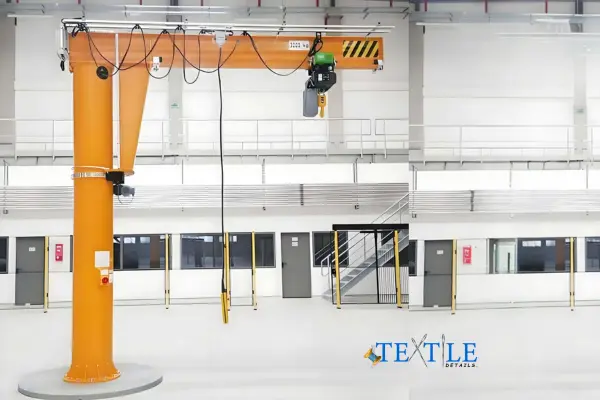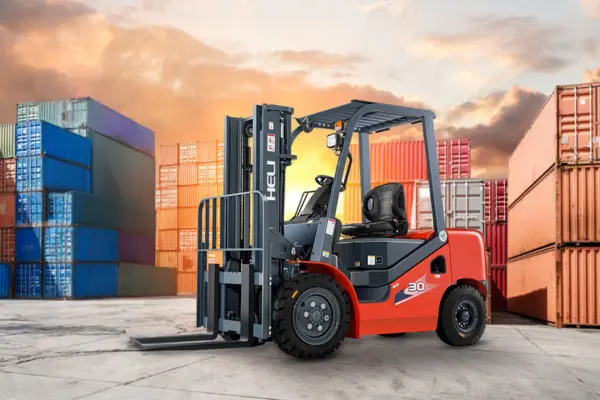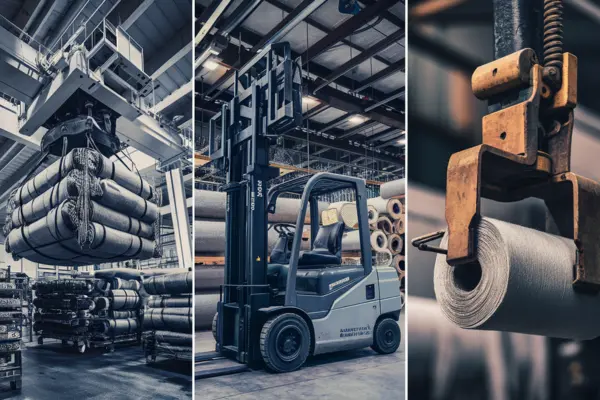Textile factories are bustling hubs of activity, where efficiency and precision are crucial. Among the many components that contribute to smooth operations, lifting equipment plays a vital role. Choosing the right lifting equipment can significantly impact productivity, safety, and overall efficiency in textile manufacturing. This article will guide you through the process of selecting suitable lifting equipment for garment factories, ensuring that your choice meets both operational and safety requirements.
Table of Contents
Types of Lifting Equipment in Textile Factories
Overhead Cranes
Overhead cranes consist of parallel runways with a traveling bridge spanning the gap. They are designed to lift and move heavy loads horizontally within a fixed area.

Overhead cranes are crucial in textile mills for handling large and heavy items such as fabric rolls, machinery, and other substantial materials. They enhance efficiency by facilitating the swift movement of materials across the production area, reducing the need for manual handling and minimizing the risk of injury.
Jib Cranes
Jib cranes have a horizontal arm that supports a moveable hoist. The jib can rotate to provide coverage over a circular area, making these cranes suitable for lifting tasks within a specific zone.

Jib cranes are used for tasks that require precision and localized lifting, such as loading and unloading materials from trucks or positioning equipment for maintenance. Their flexibility and ease of use make them ideal for improving workflow in specific areas of the textile mill.
Forklifts
Forklifts are powered industrial trucks used to lift and move materials over short distances. They come in various types and sizes, each designed for different lifting capacities and tasks.

Forklifts are indispensable for transporting heavy and bulky items, such as bales of raw material, pallets of finished products, and other equipment. Their maneuverability and versatility make them essential for maintaining efficient operations in areas where materials need to be frequently moved.
Pallet Jacks
Pallet jacks, also known as pallet trucks, are tools used to lift and move pallets. They are available in manual and electric versions, with the manual type being operated by a lever and the electric type powered by a battery.

Pallet jacks are vital for moving pallets of materials quickly and efficiently. They are particularly useful in storage areas and during the loading and unloading of trucks. Their simplicity and ease of use make them a practical solution for handling lighter loads.
Assessing Your Factory’s Requirements
Before investing in lifting equipment, it is crucial to assess your factory’s specific needs. This involves evaluating several factors to ensure the equipment you choose is appropriate for your operations.
Load Capacity
Determine the maximum weight of the loads you need to lift and move. This will help you select equipment with the appropriate load capacity, ensuring safety and efficiency. Overloading lifting equipment can lead to accidents and equipment damage.
Frequency of Use
Consider how often the equipment will be used. For continuous or high-frequency operations, invest in durable, high-quality equipment that can withstand regular use. For occasional use, more economical options may suffice.
Space Constraints
Evaluate the available space in your factory. Ensure that the lifting equipment you choose can maneuver effectively within your workspace. Compact designs may be necessary for factories with limited space.
Evaluating Equipment Suppliers

Choosing the right supplier is as important as selecting the right equipment. A reputable supplier can provide quality products, reliable service, and ongoing support.
Supplier Reputation
Research potential suppliers and evaluate their reputation in the industry. Look for reviews, testimonials, and case studies to gauge customer satisfaction and product reliability.
After-Sales Support
Consider the level of after-sales support provided by the supplier. This includes installation, training, maintenance, and repair services. A supplier that offers comprehensive support can help ensure the long-term performance of your lifting equipment.
Warranty and Service Agreements
Check the warranty and service agreements offered by the supplier. A robust warranty can provide assurance of the equipment’s quality, while a service agreement can ensure regular maintenance and prompt repairs.
Lifting Equipment Manufacturer VS Trader
Different manufacturers excel in producing various types of lifting equipment. For instance, Konecranes and Dafang Crane are renowned for their expertise in manufacturing bridge cranes, gantry cranes, and jib cranes. In contrast, Crown and Toyotaforklift specialize in forklifts.
Communicating directly with manufacturers has its benefits, primarily cost savings. However, it also involves challenges, such as the need to contact different representatives for various types of equipment, managing complex import processes, and coordinating the operation of different equipment, which can be cumbersome.
Trading companies like DGCRANE collaborate with multiple manufacturers and excel in handling import and export tasks. They offer a streamlined process that reduces human resource costs and provides better overall service. The convenience and efficiency they offer come with the drawback of potentially higher costs. However, the advantages often outweigh the additional expense, as these companies can handle all aspects of procurement and logistics, ensuring a seamless and integrated solution for diverse equipment needs.
Cost Considerations
While cost should not be the sole factor in your decision, it is essential to consider your budget when selecting lifting equipment. Balancing cost with quality and functionality can help you make a cost-effective choice.
Initial Investment
Evaluate the initial cost of the equipment, including any installation fees. High-quality equipment may have a higher upfront cost but can offer better performance and longevity.
Operating and Maintenance Costs
Consider the ongoing operating and maintenance costs of the equipment. Efficient, low-maintenance machines can save money in the long run. Additionally, energy efficient equipment can reduce operational costs.
Training and Operator Competence
Investing in lifting equipment is only beneficial if operators are well-trained and competent in its use. Proper training ensures safe and efficient operations.
Training Programs
Implement comprehensive training programs for operators, covering equipment operation, safety protocols, and emergency procedures. Regular refresher courses can keep skills up to date.
Certification and Competency
Ensure that operators are certified and competent to use the lifting equipment. Certification programs validate their skills and knowledge, promoting a safer work environment.
Customization Options
Every textile factory has unique needs, and off-the-shelf solutions may not always be ideal. Customization options allow you to tailor lifting equipment to your specific requirements.
Customized Designs
Work with suppliers that offer customized designs to meet your factory’s unique needs. This can include tailored load capacities, specific safety features, and custom dimensions.
Integration with Existing Systems
Ensure that the lifting equipment can integrate seamlessly with your existing systems and workflows. This can enhance efficiency and reduce the need for significant operational changes.
Conclusion
Selecting suitable lifting equipment for textile factories involves careful consideration of various factors, including load capacity, safety, supplier reputation, cost, and technological advancements. By thoroughly assessing your factory’s needs and prioritizing safety and efficiency, you can make an informed decision that enhances your operations.
Investing in the right lifting equipment not only improves productivity but also creates a safer work environment, ultimately contributing to the success and sustainability of your textile manufacturing operations.

Monjurul Hasan, An On-Page SEO Expert on WordPress. Study in Automobile & Textile Engineering at Bangladesh Sweden Polytechnic Institute (BSPI). Having 3+ years of experience in Automobile and Technical Textile Products. Working at Upwork & Fiverr MarketPlace . Highly interested in technical product development and fashion forecasting.
